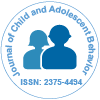Наша группа организует более 3000 глобальных конференций Ежегодные мероприятия в США, Европе и США. Азия при поддержке еще 1000 научных обществ и публикует более 700 Открытого доступа Журналы, в которых представлены более 50 000 выдающихся деятелей, авторитетных учёных, входящих в редколлегии.
Журналы открытого доступа набирают больше читателей и цитируемости
700 журналов и 15 000 000 читателей Каждый журнал получает более 25 000 читателей
Индексировано в
- Индекс Коперника
- Google Scholar
- Открыть J-ворота
- Академические ключи
- БезопасностьЛит
- РефСик
- Университет Хамдарда
- ЭБСКО, Аризона
- OCLC- WorldCat
- Публикации
- Женевский фонд медицинского образования и исследований
- Евро Паб
- ICMJE
Полезные ссылки
Журналы открытого доступа
Поделиться этой страницей
Абстрактный
Parent and Youth Communication Patterns on HIV and AIDS, STIs and Sexual Matters: Opportunities and Challenges
Seloilwe ES, Magowe MM, Dithole K and St. Lawrence JS
Background: This paper describes communication patterns of parents and their adolescent children with regard to sexual matters, HIV and AIDS and other STIs from the perspectives of parents, youth and key informants. The objectives of this study were to determine the sexual communication patterns that young people and their parents used; identify the challenges and barriers to communication between youth and their parents and recommend ways to address these challenges. Data were collected from youth, parents and key informants. Understanding these sexual communication patterns was necessary for the adaptation of an HIV prevention program called BART (Being A Responsible Teen) that was developed in the US to educate youth to delay sexual debut, promote abstinence, prevent teenage pregnancy, HIV and other sexually transmitted infections among this youth. Methods: Qualitative methods were utilized to investigate communication patterns between parents and their adolescent children on sexual matters. In-depth qualitative interviews were conducted with 40 youth, 20 key informants and 40 parents to yield information on how parents and their adolescents communicated with regard to sexual matters. The study was approved by the University of Botswana Office of Research and the Development Ministry of Education Skills and Development. Findings: Results indicated that communication on sexual topics between parents and adolescents is limited or non-existent. Both adolescents (71.1%) and their parents (86.6%) preferred that parents should be the ones to teach their children about sexual matters and inform them about the risks that may ensue. However, parents were not comfortable or confident to discuss issues of sexuality and inherent risks with their own children. Some parents indicated that they can discuss these matters with children other than their own. As a result they request relatives to assume a complementary role and ask them to talk to their children on sexual matters. All agreed that there is a need to intervene and educate both parents and adolescents to communicate on these matters and endorsed an educational HIV prevention programme to equip them with communication skills and knowledge. Conclusion: A communication gap on sexual matters and inherent risks between youth and their parent has been identified. Informants endorsed the need for a primary prevention program addressing adolescents and their families in order to reduce risk behaviours among Batswana youth and to provide them with skills that would assist them to minimise the risk of HIV infection.
Журналы по темам
- Биохимия
- Ветеринары
- Генетика и молекулярная биология
- Геология и науки о Земле
- Еда и питание
- Иммунология и микробиология
- Инженерное дело
- Клинические науки
- Материаловедение
- медицинские науки
- Науки об окружающей среде
- Общая наука
- Сельское хозяйство и аквакультура
- Социальные и политические науки
- Уход и здравоохранение
- Фармацевтические науки
- Физика
- Химия

 English
English  Spanish
Spanish  Chinese
Chinese  German
German  French
French  Japanese
Japanese  Portuguese
Portuguese  Hindi
Hindi